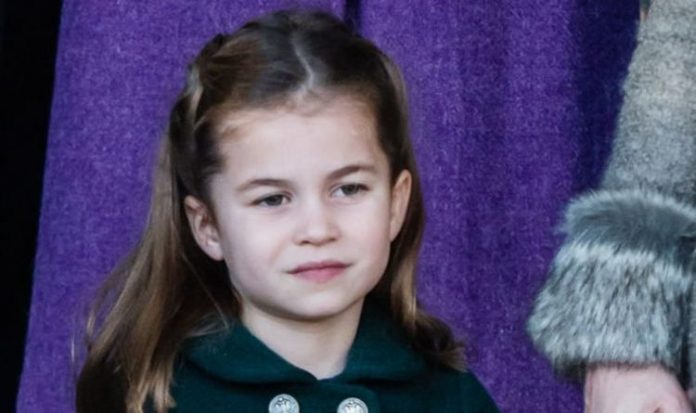Princess Charlotte recently wowed royal watchers in a video appearance alongside her younger and older brothers. Revealing she was not afraid of spiders, young Charlotte asked naturalist Sir David Attenborough if he liked the eight-legged critters. The video was an instant hit with nature lovers and royal fans alike and came as Prince William launched the Earthshot Prize for environmental solutions, alongside Sir David.
The young royals’ video was one of the first times the nation had heard Princess Charlotte, Prince Louis and Prince George speak to a camera.
This delighted fans and in a previous video – of the Cambridges clapping for the NHS – Charlotte showed her confident side.
Body language expert Judi James told Femail: “Charlotte does appear to be something of the little leader in the family dynamic, stepping to the front of the pose with her parents interestingly out of eye-line and instigating the clapping, using what looks like the most energy and excitement.
“Charlotte has always been the one who seems the most enthusiastic about waving and clapping to the public, and her meet and greet with the crowds at Christmas suggested Kate and William might acknowledge the fact that she is currently the most confident of their children in social situations.”
Read More: Prince George, Charlotte and Louis ‘wiped out’ Prince Harry’s status
In recent times a lot more of the Royal Family’s appearances have taken place on camera, due to the coronavirus pandemic.
Prince William and Kate, Duchess of Cambridge in particular have taken to video calls and interviews with ease.
They have spoken to frontline health workers, carried out royal engagements and even appeared on ITV’s This Morning in recent months.
As second in line to the throne, Prince William has an important role within The Firm, something which his children will emulate once they are old enough.
Simply put, it ended the system of male primogeniture and stated girls will not be overtaken by younger brothers.
So when Louis was born on April 23, 2018, Charlotte did not give up her fourth in line position to him.
Many female royals had previously lost their position to younger siblings, as the Act only applies to those born after October 28, 2011.
For example, the Queen Elizabeth II and Prince Philip’s daughter Princess Anne is much further down the line of succession than her younger brothers.
Anne, 70, is 14th in line to the throne behind her niece – Prince Edward’s daughter Lady Louise Windsor.
Should the Succession to the Crown Act have been in place at the time of Prince Andrew and Prince Edward’s births – both she and her children would be much closer in the line of succession.
So far Charlotte is the only royal to have benefitted from this rule change, however, future royals will have it apply to them too.
For example, Princess Eugenie is currently expecting her first child with husband Jack Brooksbank.
If Eugenie has a daughter in early 2021, and then later has a son, her daughter will retain her place in line.
Other royal families where this is seen include Sweden, Belgium and the Netherlands.
However, it is not true of all royal families, as, in countries like Spain and Monaco, males are lifted up the succession over females.
So, Prince Jacques, son of Prince Albert of Monaco and Princess Charlene, is the heir apparent even though she is older.







